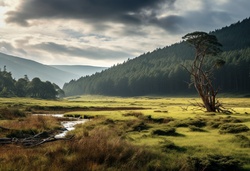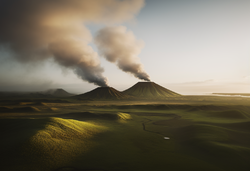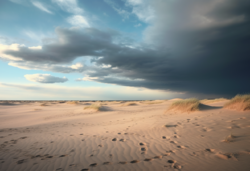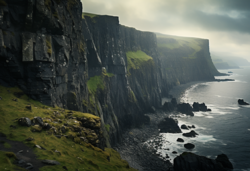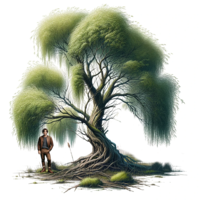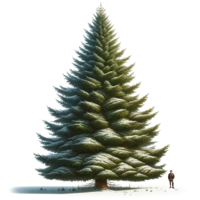Dnkluwos Islands: Difference between revisions
Jump to navigation
Jump to search
(→Fauna) |
(→Flora) |
||
| Line 27: | Line 27: | ||
== Flora == | == Flora == | ||
=== Trees === | |||
{| class="wikitable" | |||
!Tree Species | |||
!Wolgos Name | |||
!Description | |||
!Image with an Eokoesr for size comparison | |||
|- | |||
|Highland Ironwood (Ferrifagus montanus) | |||
|'''Bhergherom''' | |||
|A resilient tree found in the Whwdhoros Highlands, known for its dense wood with a pattern resembling Damascus steel. Its small, tough leaves are adapted to resist harsh winds and cold temperatures. Some specimens can reach heights of up to 40 meters. | |||
|[[File:Ironwoodwol.png|frameless|200x200px]] | |||
|- | |||
|Marsh Willow (Salix paludis) | |||
|'''Wetalis''' | |||
|Thriving in marshlands and wetlands, these willow trees have long, flexible branches. They are vital for absorbing water and stabilizing marshy soil. Some specimens can grow up to 32 meters tall. | |||
|[[File:Willowwol.png|frameless|200x200px]] | |||
|- | |||
|Cinder Pine (Pinus pyroclastica) | |||
|'''Peh2pénu''' | |||
|Native to the volcanic Cinder Plains, these pines flourish in nutrient-rich volcanic soil. They feature thick, fire-resistant bark and hardy needles. These trees often exhibit twisted, tortured shapes due to wind and harsh conditions, growing up to 15 meters tall. The pine berries are highly valued for making gin. | |||
|[[File:Cinderpine.png|frameless|200x200px]] | |||
|- | |||
|Coastal Burgundy Cedar (Juniperus litoralis) | |||
|'''Moréunós''' | |||
|Found along the rocky shores and coastal regions, these salt-tolerant cedars can withstand strong sea winds. They are noted for their distinctive burgundy bark and strong, pleasant aroma, growing up to 26 meters in height. | |||
|[[File:Cedarbur.png|frameless|200x200px]] | |||
|- | |||
|Boreal Spruce (Picea borealis) | |||
|'''Ghelh3pikw''' | |||
|Predominant in the boreal forest regions, these spruces are characterized by a conical shape and dense, needle-like leaves, suited for snowy conditions. They are known for their strong, durable wood, growing up to 50 meters in height. | |||
|[[File:Spruce.png|frameless|200x200px]] | |||
|} | |||
== Fauna == | == Fauna == | ||
Revision as of 07:04, 30 December 2023
| Geo-area | |
|---|---|
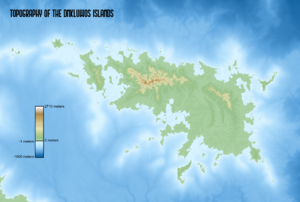 Image description: Natural landscapes of the Dnkluwos Islands | |
| Countries: | Old Dhonowlgos, Rissland |
| Continent: | Anaria |
| Location | |
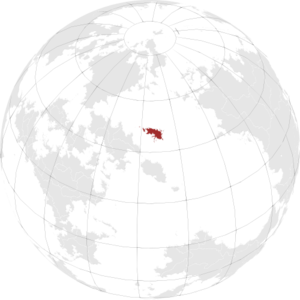
| |

